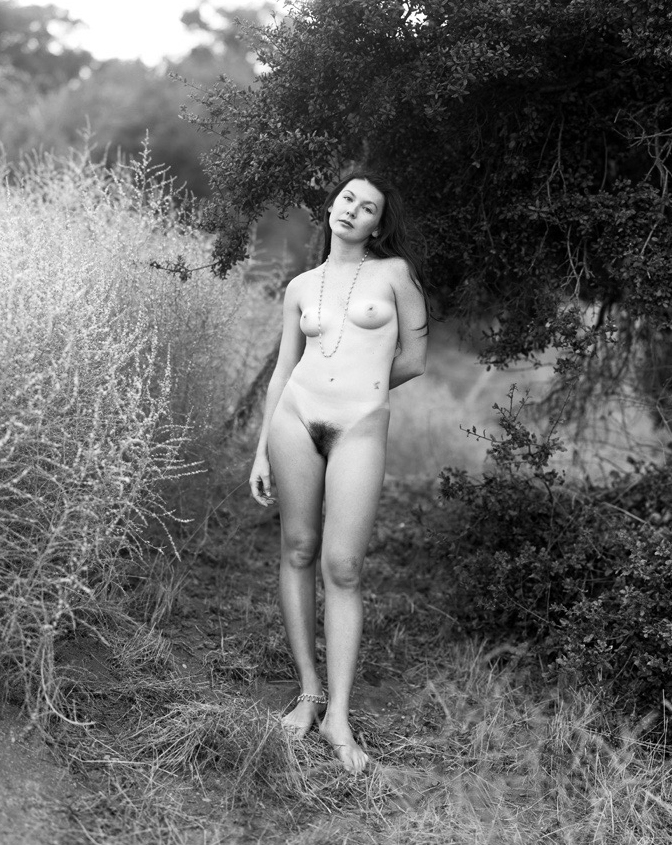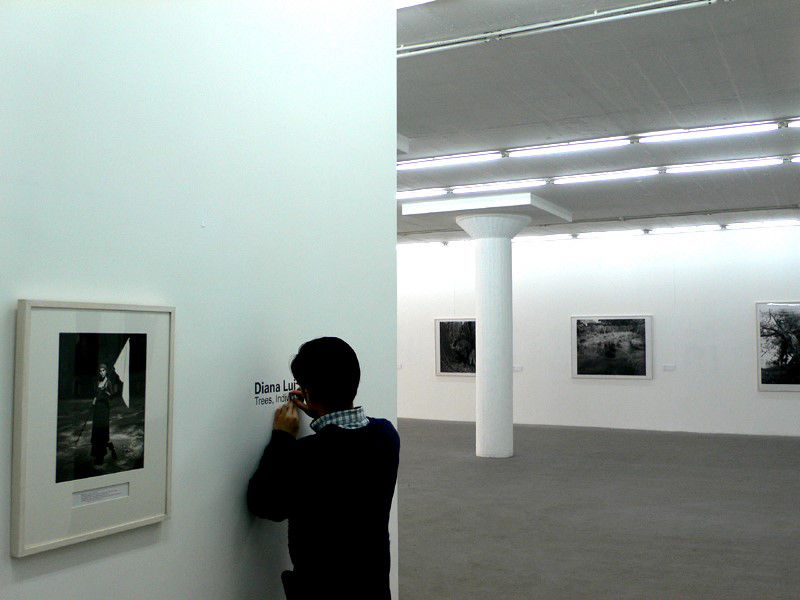Intimate portraits 1




INTIMATE PORTRAITS
Portraits of women and men in the 20th and 21st Centurywork in progress
medium : large format analog photography, 8x10 inch view camera
exhibitions · selection :
- Galerie Sinitude, Paris · 2008, « Femmes, Arbres et Hommes »
- Guangdong Museum of Art, China · 2007, « Cities of the Immortals »
- Aura Gallery, Shanghai · 2006, « Trees, Individuals and Sexuality »
- The 3rd Ping Yao International Festival of Photography, China · 2003
“Before they become a work of art, Diana Lui’s nudes are images of a body, but they are also the reflection of the social environment the model belongs to as well as of the history that has formed its identity to the point that the mere image of the nude is so strong, a name associated with it becomes unnecessary.
We are not faced with the concept of identity in the way a government office would define it: passport size photograph, name, age, citizenship. The nude body that is revealed here, in part of whole, often has a complex history that cannot be reduced to mere informational data, rather by a few “biographical themes” or “biographèmes”– a term used by Roland Barthes – that help put together a story.
We understand quickly that Diana Lui has selected people floating in a certain transit, in travels, in encounters, the type of people who live a roving life and only land momentarily at the end of long and curious journeys. Do these young women simply undress physically or through their discourse? Although it speaks highly of the art of the nude, laying bare one’s body does not disclose much in terms of identity, nor do the few excerpts of biographical notes.
The real source of identity is in the eyes, their expression, their look that Diana Lui’s artistic treatment of the image and quality of the portrait lead us to. The look can be tense like a dart ready to strike, but also be a shield to protect the thoughts and sensibility of a defenseless model left there in a delicate yet sensual state of abandonment. Nature’s diversity in body shapes and forms are clearly visible in the flesh. Yet, not one body resembles another, even if a certain and fragile grace created by the art of photography, links them together. The eyes however all speak to us, they look at us to reveal a thought or an emotion. But those darts and shields are in fact a decoy; they’re not there to frighten us away but on the contrary they pull us into an interior world.
Around a corner suddenly appears the Venus of Boticelli, her hair slightly floating in the wind, her swaying walk so reminiscent of renaissance and Baroque figures, but the expression in her eyes is so raw it brings us back to the reality of art photography, to the reality of the person standing there in front of us, to the face of the Other whereupon rest the potential tenderness and violence of all human beings.”
- Anne Biroleau, Curator, 21st Century Photography Department, Bibliothèque Nationale de France












« …the power and magic of Diana Lui’s photographs lie indeed in their depiction of our quest for “origins” (or “roots” in Diana Lui’s language, where we come from), in the sense that the only experience we human beings missed in our lifetime is the indispensable moment when we were conceived by our progenitors. In Diana’s nude portraits there is the belly button that links us all to One and the Other. This universal scar testifies that we are not alone in our existence. Thus Diana’s work and her striking “verticality” in her photographs (most models are standing, like trees) lead us into a reflection on our own mortality, and what explains our frantic struggle to attain immortality through memory storage and through reproduction and succession of generations that are only made possible through desire and through sexuality... »
- Jean Loh, Curator




« Les photographies de Diana Lui évoquent les symboles chinois de l’harmonie, le Yin et le Yang, l’équilibre entre le masculin et le féminin. Elles sont faites d’un savant mélange entre la « dureté » du grand format 20x25 et la « douceur » de son art du portrait. À l’heure de la technologie digitale, la plupart des photographes jugent l’emploi de son appareil photo trop difficile en raison de son volume, de son poids, de son manque de maniabilité et de souplesse pendant une séance photo. Pourtant cet appareil grand format offre un détail et une précision bien supérieurs à ceux des autres appareils. En ce sens, Diana a une approche masculine, physique et technique, de l’image.
D’un autre côté, ses portraits sont tout en douceur et en finesse. Pas de gestes appuyés, pas d’accessoires, rien de démonstratif, au contraire, ses images sont douces, subtiles et féminines.
Ses portraits me font penser à des rides à la surface de l’eau. Chaque portrait est comme un étang qu’une goutte d’eau vient toucher en son centre – le sujet – engendrant des rides concentriques vers les bords extérieurs – le tableau. Le sujet et son environnement sont ainsi reliés entre eux dans une grande simplicité. L’environnement entourant chaque sujet contient un minimum de détails, des objets qui soulignent l’essence même de chaque personne photographiée. Ses portraits ne montrent ni trop, ni trop peu.
Les photos de Diana marquent la rencontre entre la précision technique de son appareil et le mystère et la sensualité de la personne photographiée au point d’équilibre parfait entre « dureté » et « douceur ». À ce point, l’image se fige et commencent à pénétrer votre subconscient, lentement, doucement, sans chercher à vous heurter. Vous vous sentez alors irrésistiblement fasciné par l’énigme sereine de ces portraits.
Dans l’histoire de la photographie, on pourrait comparer les portraits de Diana Lui à ceux d’August Sander sur le peuple allemand. Mais si tous les deux travaillent le portrait en noir et blanc avec subtilité et réalisme, Diana dépasse l’objectivité d’August Sanders par le lyrisme et la sensibilité de son interprétation. Cette combinaison harmonieuse entre objectivité masculine et lyrisme féminin fait de son travail une œuvre unique dans le monde de la photographie d’art contemporaine. »
- Adam Beinash, Rédacteur Photo, Art & Auction Magazine, New York
© Copyright Diana Lui 2021-2022. All rights reserved.
Unless otherwise indicated, all materials on these pages are copyrighted. No part of these pages, either text, images or videos may be used for any purpose other than personal use, unless explicit authorization is given by Diana Lui. Therefore reproduction, modification, storage in a retrieval system or retransmission, in any form or by any means – electronic, mechanical or otherwise, for reasons other than personal use, is strictly prohibited without prior written permission.